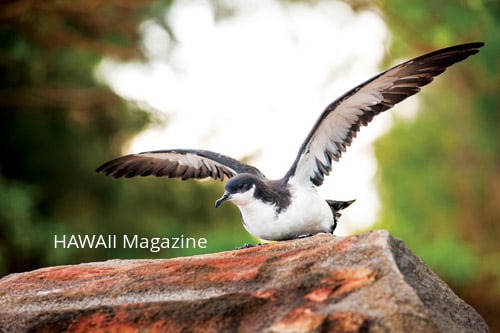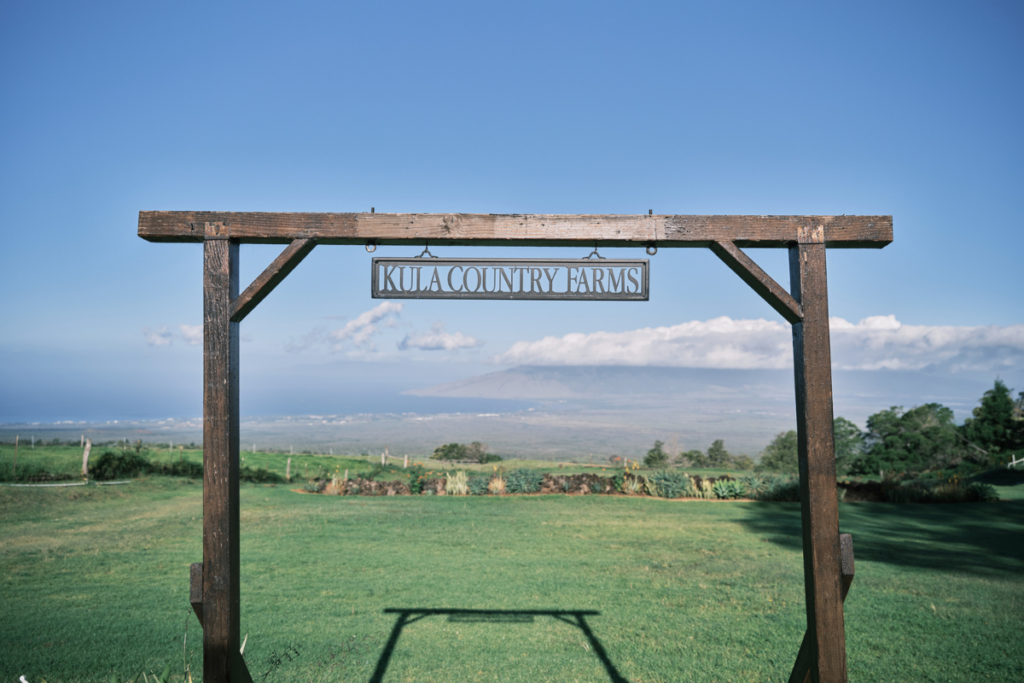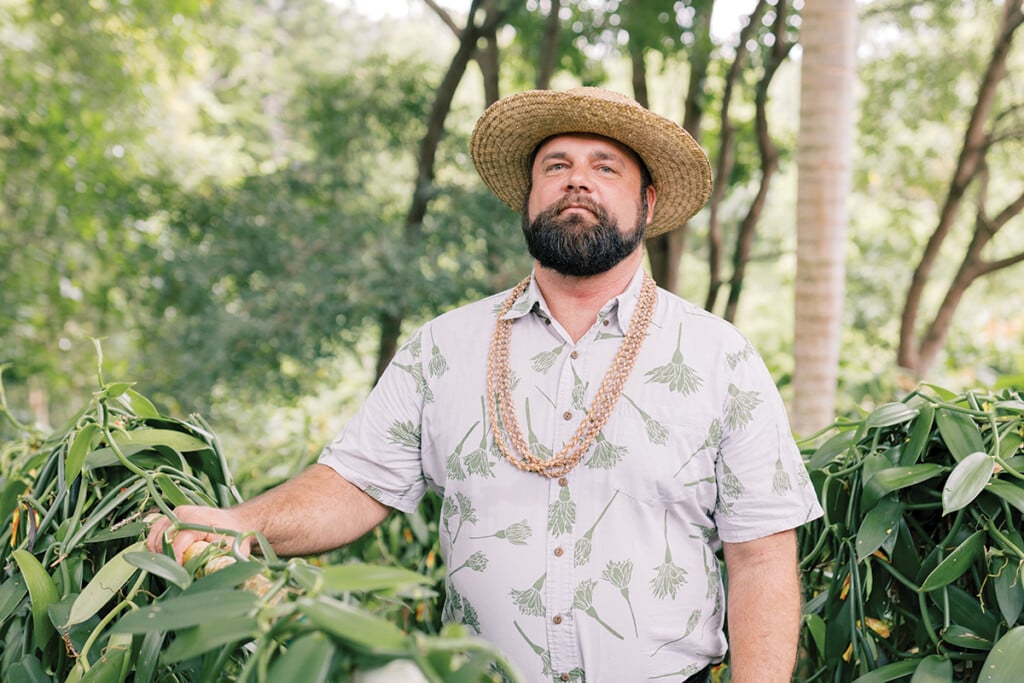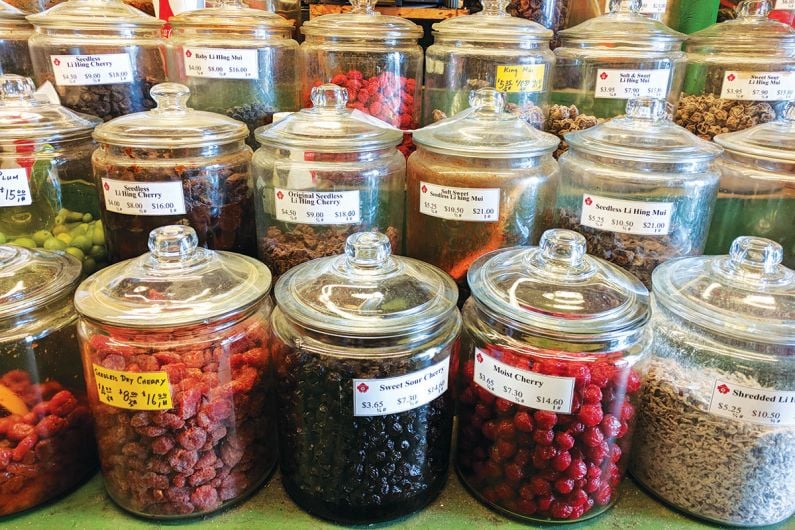Flight Risk: Saving Kauai’s endangered Newell’s shearwaters

Sitting at the fingertip-shaped end of a narrow mountain ridge in camouflage pants and rubber boots, Dr. André Raine plucks a white-splattered leaf from an old ohia tree and holds it to his nose.
It’s a rare sunny day here, in the mountains high above the town of Kalaheo on Kauai’s west side. A bog just behind us is evidence of the usual precipitation this place receives.
“This is fresh guano,” Raine says, holding up the leaf.
After traversing a four-wheel-drive road, hiking a muddy hour or so to the ridge’s 1,000-feet-above-sea-level elevation and picking our way down another ridge through a tangled mat of uluhe (false staghorn fern), evidence of fresh guano is a good thing for the diehard bird guy.
“There was probably an exchange of partners [here] last night,” says Raine, project coordinator for the Kauai Endangered Seabird Recovery Project. We study the foot of the old ohia tree, its gnarled roots the perfect location for a nest of Newell’s shearwaters.
Endemic to the Hawaiian Islands, Newell’s shearwaters—also known as Hawaiian shearwaters—once nested throughout the entire island chain. As ground nesting birds, however, they proved easy eating not only for early Hawaiians, but also human-introduced, non-native animals such as rats, cats, pigs, dogs, mongoose and owls. In the 1990s, at-sea surveys estimated the shearwater population at 19,000 breeding pairs. Scientists estimate that number has since declined 75 percent, earning the Newell’s shearwater a spot on the International Union for the Conservation of Nature’s Red List of Threatened Species.
It takes two shearwater adults to raise one offspring. From courtship to their chick’s fledging, the whole process takes about seven months. During that time, both adults take turns first incubating the egg, and then feeding their chick. Three-foot wingspans allow them to fly hundreds of miles from their nests, dive to ocean depths of up to 150 feet for squid and return quickly to feed their chick in mere days.
I drop to my knees and peer into the two-foot-long burrow at the base of the ohia tree, but cannot see anything. Surprisingly, given the elevation, I do take in the scent of ocean. The shearwater’s contribution to the landscape here is nitrogen, dispersed by its burrow digging and guano droppings, respectively loosening and fertilizing the soil. In the 1990s, there was a colony of 48 known breeding pairs where Raine and I stand. Only a handful of pairs remain.
Today, 90 percent of Newell’s shearwater nests are in locations so inaccessible, Raine and his team have to drop in by helicopter. One might assume predators an afterthought in such remote reaches, but motion-activated cameras reveal frequent attacks on the birds by rats and feral cats. Because shearwaters take four to six years to reach reproduction age, the killings have impacted the species population.
Natural predators are hardly the shearwaters’ only threats. Because they most often travel in darkened skies just after sunset and just before sunrise, adults flying at speeds upward of 25 mph have crashed into Kauai power lines. On their first flights, fledglings often mistake bright evening lights for the moon and collide with buildings and other structures. Still others fall from the sky in exhaustion after circling the manmade lights.

Says Raine, “When you think about all the threats and issues these birds face in the mountains and all that investment in time and effort by the parents, then, on the chick’s first flight out to sea, it gets attracted to these lights, crashes to the ground and that’s the end of the next generation of Newell’s shearwaters, it’s a pretty depressing end for such a beautiful and endangered bird.”
Thankfully, the plight of the Newell’s shearwater has not gone unnoticed. Headed by Raine, the Kauai Endangered Seabird Recovery Project has worked closely with the island’s local utility company, utilizing radar surveys and sound-recording devices to identify flight paths where shearwaters are colliding with power lines. Raine points to a string of electrical lines running through the remains of the Kalaheo colony.
“Those are, hopefully, going to be underground shortly,” he says.
In addition, thousands of bright evening lights on Kauai have been shielded over the years. Through the efforts of the Kauai Humane Society’s Save Our Shearwaters program, founded in 1979, more than 30,000 “fallout” birds from the sky have been rescued and rehabilitated. Earlier this year, the Hawaii Department of Land and Natural Resources began a new fencing project aimed at protecting Newell’s shearwater breeding grounds in Hono O Napali Natural Area Reserve, in the highlands above the Napali Coast, by keeping ungulates out.
Not all conservation efforts have been voluntary. A few required threatened or filed lawsuits, pitting environmental and cultural groups against resorts, the utility company and Kauai County government. In 2010, a decision to darken high school athletic fields during fall football season and move Friday night games to Saturday afternoons, met with heated public discourse.
As we pick our way through uluhe on the way back up the ridgeline, Raine pauses to adjust a song meter. Painted pinkish-orange and shaped like Easter baskets, the auditory devices are dropped into the area by helicopter to help Raine determine where Newell’s shearwaters are nesting. I’ve seen Newell’s shearwaters feeding offshore from the deck of a tour boat and rescued a few off Kauai roadsides, depositing them in safe boxes during fledging season, but their unique call—unlikely to be confused with other birds, including other species of shearwaters—is what I still find most fascinating. The Kalalau Lookout at Kokee State Park is a place you’re most likely to hear it.
“If you hear [something that sounds like] a donkey flying overhead, it’s probably not a donkey,” Raine says. “Unless it’s from the movie Shrek, it’s a Newell’s shearwater.”
Raine can do a pretty good imitation of a Newell’s shearwater’s call. Good enough to make me wonder how completely their calls once filled Kauai’s soundscape when the island’s night skies were full of the seabirds. Raine’s imitation is only a tiny echo of that era. But I’m beginning to believe that his efforts and those of others will be enough to assure the real call of the Newell’s shearwaters remains alive on Kauai.


